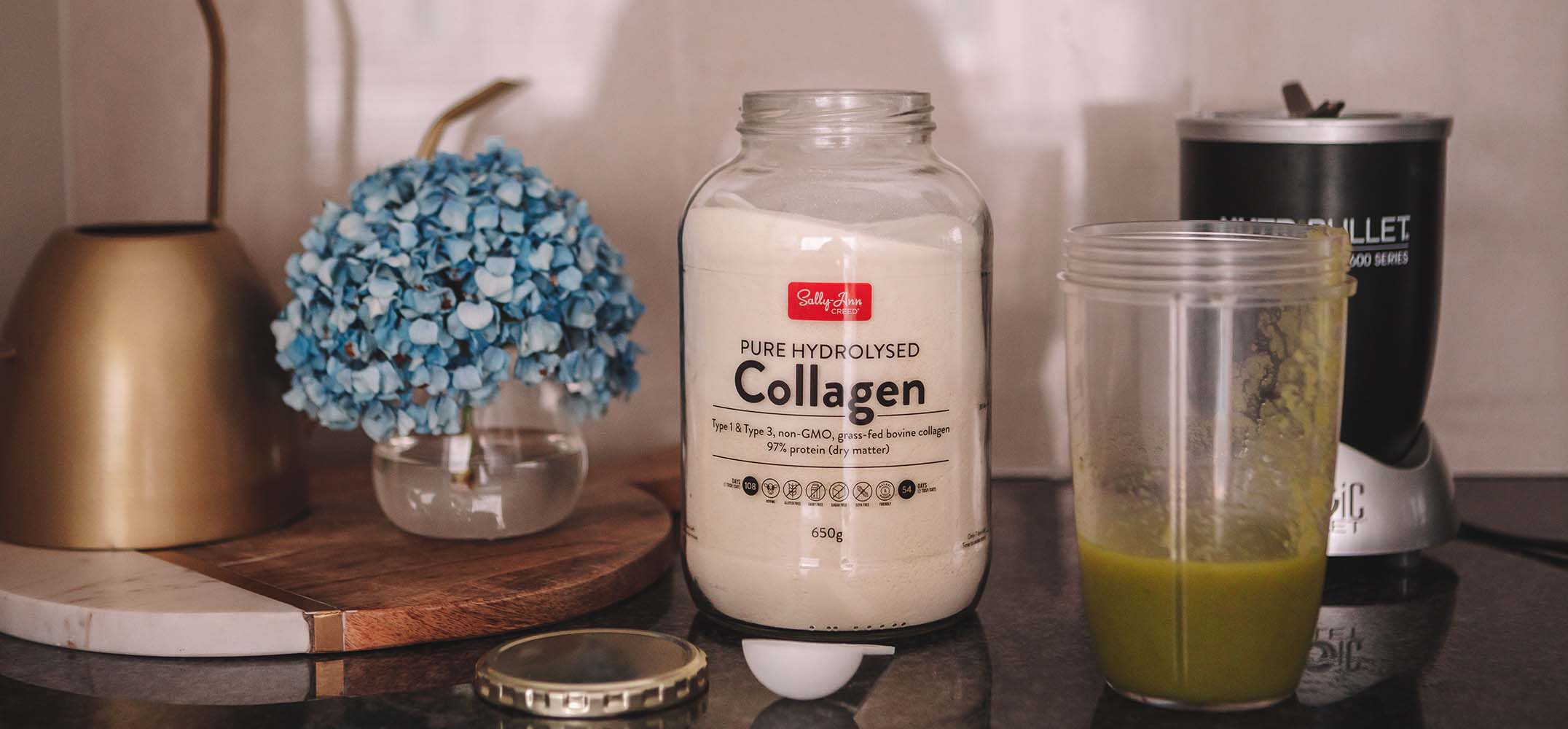Many people ask us what the difference is between the various collagen types. Certain types are better taken together as they occur in nature (type I & III as you’ll find in our Pure Hydrolysed Collagen), and it’s best to take our Pure Hydrolysed Super Chicken Collagen (type II) separately from the Pure Hydrolysed Collagen because you will get much better results as they have different amino acid profiles. Aside from water, collagen is the most plentiful substance in our bodies, and a building block for skin, tendons, and bones.
Collagen types contain different proteins which serve separate purposes within the body. Types I & III can be taken together (they occur together naturally in bovine collagen) and support skin, muscles, bones, and hair and nail growth and maintenance. Collagen Type II protein makes up the fluids and function in the cartilage and joints. That’s why type II collagen should be taken separately from Types I & III to ensure adequate absorption.
There are 19 amino acids found in Collagen Types I & III – each essential to functions and maintenance within skin, muscles, and bones. These types are produced by fibroblasts (cells in connective tissues) and osteoblasts (cells that make bones). Over 90% of collagen in the body is Type I & III Collagen and this collagen is high in glycine, proline, alanine, and hydroxyproline.
- Glycine – the amino acid found at the highest levels in collagen, requires more serine than our bodies can naturally produce. Studies suggest the need for glycine supplementation to achieve ideal metabolic processes.
- Proline – a non-essential amino acid synthesised from glycine and important in function of joints and tendons
- Hydroxyproline – an amino acid that plays an essential role in the stability of collagen
- Alanine – the amino acid used in the biosynthesis of proteins
Collagen Type II is produced by chondrocytes (the non-cellular matrix of cartilage) – a liquid-like filling within the cartilage.
Why supplement with collagen if it already naturally occurs in the body?
Over time, the ideal levels of collagen our bodies naturally produce begin to wane. Collagen fibres break down or no longer regenerate, and lead to a “deflation” effect on the surface of the skin. The diminishing effects of reduced collagen Type II are less obvious and often go unnoticed or are considered “normal” for the ageing process. Research indicates that by the age of 40, the body’s ability to produce collagen decreases by 25%. By age 60, it has decreased by over 50%.
Despite being made up of some non-essential amino acids, the supply of ideal levels of naturally occurring collagen cannot meet the demand. Though it is possible to obtain extra collagen through diet (consuming a fair amount of animal products such as gelatinous meats, the cartilage on bones such as chicken drumsticks, and skin from poultry), it is very difficult to eat enough to support the body’s growing requirements.
Collagen Types I & III for Hair, Skin, Nails, and Bones
- minimise fine lines and wrinkles
- improve elasticity
- support the bone matrix (36% of bone is made up of collagen Type 1 and 3)
- correct weak or damaged nail beds
- thicken fine hair, slows hair loss
- improve circulation
- promote glycine production which builds leans muscle and helps burn fat during sleep
- increases skin hydration by 28%
- decreases micro-furrows by 26%
- increases skin suppleness by 19%
Collagen Type II for Joint and Cartilage Support
- makes up 50-60% of protein in cartilage
- makes up 85-90% of collagen in articular cartilage
- may reduce popping knees
- may support back, jaw, and joints
- includes glucosamine, chondroitin, and hyaluronic acid
We suggest taking Type II Collagen at bedtime on an empty stomach. To improve effectiveness, do not take in conjunction with Type I & III.
High-quality collagen is appropriate and beneficial for adults of all ages. Our Pure Hydrolysed Collagen is the best there is – grass-fed, non-GMO, no hormones or steroids and 100% pure. Get yours from our online store here.

